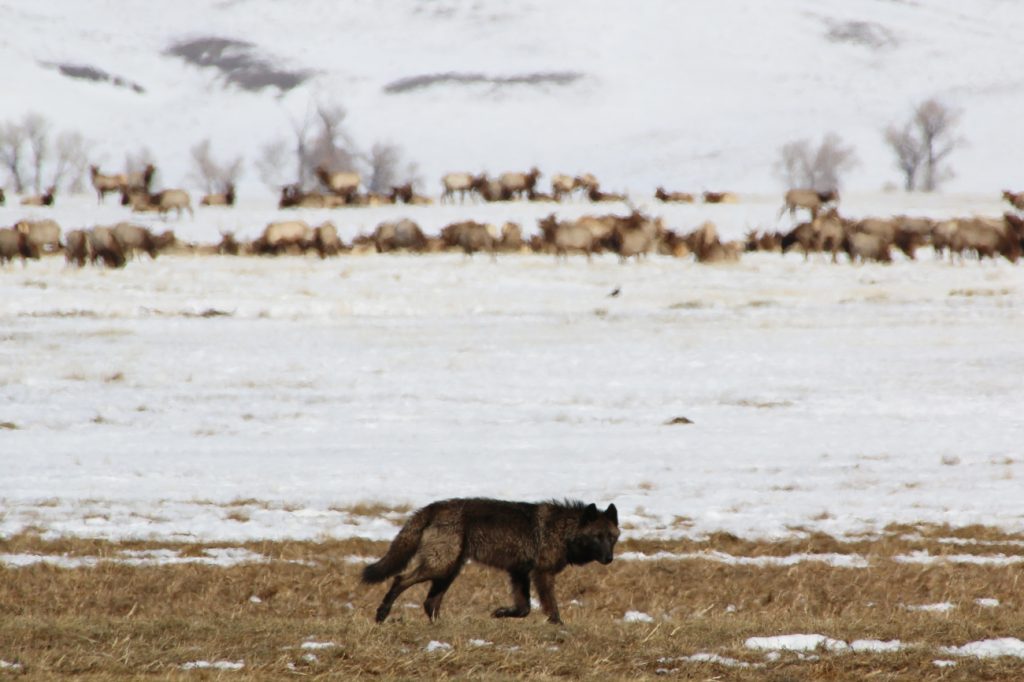Colorado Rep. Lauren Boebert’s bill to strip gray wolves of Endangered Species Act protections heads to U.S. House
The bill would also prevent judicial review of the action following legal ping-pong over wolves’ delisting in the past

A bill to delist gray wolves from the federal Endangered Species Act is heading to the U.S. House of Representatives after clearing its first hurdle.
The legislation — championed by Colorado Republican Rep. Lauren Boebert and her Republican colleague from Wisconsin, Rep. Tom Tiffany — was passed by the House Natural Resources Committee on Wednesday, April 9, in a 24-17 vote.
The Pet and Livestock Protection Act would not only delist the species but also prevent judicial review of the legislative action.
Boebert claimed populations of gray wolves have recovered and should be lauded as a success story of the Endangered Species Act.
“When the gray wolf was first listed under the Endangered Species Act in 1967, its population had dwindled to fewer than 1,000 across the lower 48 states. The protections afforded by the act were necessary then, and they worked,” Boebert said. “The science is clear. The wolf is recovered.”
Preventing judicial review of the delisting would protect against “extremist groups” and “activist judges,” Boebert said.
In delisting gray wolves, management of the species would be turned over to the state and tribal wildlife agencies, something proponents argue has proven successful in states like Idaho, Montana, Wyoming and others.
“De-listing the gray wolf would empower states to implement flexible, localized management that would balance wolf populations with the needs of our rural communities,” Boebert said.
Opponents argued in the Wednesday hearing that the bill does nothing to incentivize states to adopt strong conservation management.
“After a previous delisting in 2011 and 2020, some states implemented aggressive wolf hunting policies, even offering bounties, undermining conservation efforts and reviving the very practices that decimated wolf populations in the first place,” said Rep. Val Hoyle, an Oregon Democrat.
Lawmakers in opposition claimed that the bill undermines science and the ongoing work of the U.S. Fish and Wildlife Service to manage the species. Specifically, lawmakers said it undercuts the agency’s current effort to release a nationwide gray wolf recovery plan by December.
Hoyle said this plan is “essential for guiding science-based recovery and eventual delisting of gray wolves in the lower 48,” and takes into account more factors than population numbers to determine a species’ recovery status.
Rep. Jared Huffman, a California Democrat, added that this process critically includes a cross-section of stakeholders, including tribes, in the species’ management conversation. Something Huffman claimed the bill fails to do.
“Delisting the species based on political whims instead of scientific consensus is wrong and sets a dangerous precedent,” Hoyle said. “Congress is not better equipped than wildlife biologists to determine a species’ recovery status.”
On Wednesday, opponents failed to pass amendments that they claimed would safeguard the species should the bill be passed. This included a failed amendment that would have allowed judicial review if wolves began to see population declines of around 10% annually.
A history of gray wolves and the Endangered Species Act

Gray wolves were first listed as endangered in the United States and Mexico under the Endangered Species Act in 1978. Today, they remain listed as endangered in 44 states (including Colorado), threatened in Minnesota, and under state jurisdiction in Idaho, Montana, Wyoming, portions of eastern Oregon and Washington, and north-central Utah.
In Colorado, gray wolves are considered “state endangered” in addition to being listed as endangered under the federal act and as an experimental population under a special rule from Fish and Wildlife. While removing gray wolves from the federal act would invalidate this special rule, it would not change the state’s management.
The state would continue to follow its Colorado Wolf Restoration and Management Plan in building a sustainable population of the animals, according to previous statements from Travis Duncan, the agency’s public information officer. The state is currently managing a population of around 30 gray wolves.
Efforts to delist the species have been undertaken and challenged under the last three presidential administrations.
According to the U.S. Fish and Wildlife Service, courts have invalidated five out of six rules finalized by the agency on gray wolf status, citing at least in part a failure to consider how delisting gray wolves affects their status and recovery nationwide. The current efforts to craft a nationwide recovery plan is aimed at addressing these concerns.
In November 2020, the U.S. Department of the Interior under the first Trump administration issued a rule to delist the species. This was challenged by environmental groups and ultimately overturned by a federal judge in California in 2022, returning the protections to wolves. The Biden administration sought to overturn the court’s decision in April 2022, seeking to again delist the animal. This case is ongoing.
Huffman said the fact the agency’s delisting rules have been continuously challenged in court is “because they try to cut corners and get called out by the courts.”
“Yes, wolves have bounced back in some parts of the country thanks to (Endangered Species Act) protection, but their recovery remains nascent, tenuous in places where they’re just beginning to return and nonexistent in many suitable habitats across the vast majority of their historic range,” Huffman said.

Support Local Journalism

Support Local Journalism
As a Summit Daily News reader, you make our work possible.
Summit Daily is embarking on a multiyear project to digitize its archives going back to 1989 and make them available to the public in partnership with the Colorado Historic Newspapers Collection. The full project is expected to cost about $165,000. All donations made in 2023 will go directly toward this project.
Every contribution, no matter the size, will make a difference.









